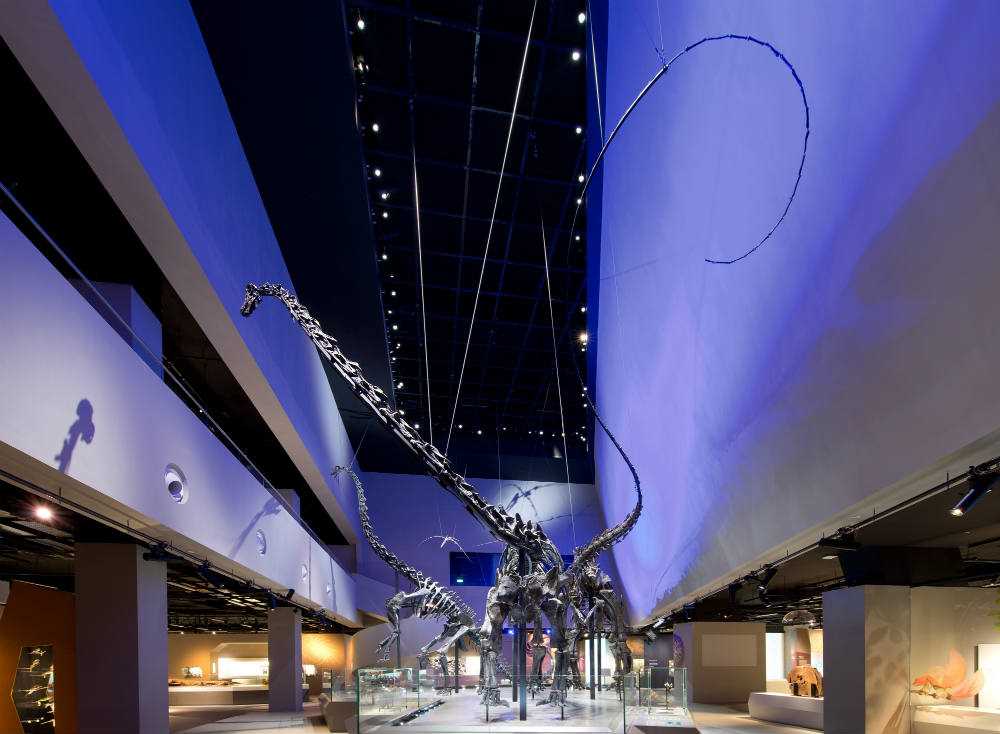Families For Life | Lee Kong Chian Natural History Museum
-
Opening Hours:
Mon (except PH): Closed Tue - Sun and PH: 10am - 7pm -
Web Site:
-
Enquiry Hotline:
6601 3333
Singapore has long had a natural history collection. Sir Stamford Raffles was an ardent naturalist who first mooted the idea of having an educational institution with a museum in 1823. His vision was realised years later in 1849 when the Singapore Museum, later known as the Raffles Museum, was established. In 1972 the collection was given to the Zoology department of the National University of Singapore. After several temporary homes, it was finally re-opened in 2015 and, with several exciting new additions, was renamed the Lee Kong Chian Natural History Museum (LKCNHM).
The new museum’s home is an intriguing building which looks a little like a large rock with levels of green within it. Within it the research collection boasts almost 560,000 catalogued lots and more than one million specimens. With over two thousand specimens on public display, the museum is well worth a visit for natural history buffs.
The Biodiversity Gallery
There are 2 galleries in the Natural History Museum. The Biodiversity Gallery can be found on the ground floor. With 15 zones to explore, there is plenty to see.
Touch and Sense
One of the most interesting things about the LKCNHM is the accessibility of some of the collection. Special signs next to the exhibits tell you if you are allowed to touch them. Reach out and feel what a 60 million year old ammonite fossil feels like and try lifting a meteor; you would be surprised at how heavy a tiny rock from space can be! Most of the displays are set at a kid’s eye level and the less fragile ones are not placed behind glass giving you a sense of openness and closeness to the specimens.
See the Dinosaurs
 These are quite rightly the stars of the gallery. Three Diplodocid Sauropod dinosaurs dominate the centre of the gallery. These dinosaurs last walked the earth almost 150 million years ago and were one of the largest creatures of the time. Named Prince, Apollonia and Twinky, they range in length from 27 to 12m long. They are so tall that only if you stand at the balcony of the Heritage Gallery which is 1 floor above, will you be able to get to “eye level” with 1 of them.
These are quite rightly the stars of the gallery. Three Diplodocid Sauropod dinosaurs dominate the centre of the gallery. These dinosaurs last walked the earth almost 150 million years ago and were one of the largest creatures of the time. Named Prince, Apollonia and Twinky, they range in length from 27 to 12m long. They are so tall that only if you stand at the balcony of the Heritage Gallery which is 1 floor above, will you be able to get to “eye level” with 1 of them.
The Singapore Sperm Whale exhibit
 In July 2015, an adult female sperm whale named Jubilee Whale - or "Jubi" for short - of 10.6 m total length was found off Jurong Island. This is the first record of a sperm whale, scientific name Physeter macrocephalus, in Singapore’s territorial waters. It appears to be the first confirmed record of its kind in the coastal waters around Peninsular Malaysia. This is the only specimen of large cetacean (the group that includes whales and dolphins) that scientists from Singapore have managed to get hold of for over a hundred years. The skeleton, which has been preserved and mounted, is displayed in the museum and the Singapore Sperm Whale Exhibition was launched in 14 March 2016. Jubi will be used as a reminder to the public to keep the oceans clean.
In July 2015, an adult female sperm whale named Jubilee Whale - or "Jubi" for short - of 10.6 m total length was found off Jurong Island. This is the first record of a sperm whale, scientific name Physeter macrocephalus, in Singapore’s territorial waters. It appears to be the first confirmed record of its kind in the coastal waters around Peninsular Malaysia. This is the only specimen of large cetacean (the group that includes whales and dolphins) that scientists from Singapore have managed to get hold of for over a hundred years. The skeleton, which has been preserved and mounted, is displayed in the museum and the Singapore Sperm Whale Exhibition was launched in 14 March 2016. Jubi will be used as a reminder to the public to keep the oceans clean.
Interactive Games and Exhibits
Children will enjoy downloading the museum app and playing a game of “find the bones” within the gallery, and several exhibits have interactive screens and audio headsets to tell you more.
The Heritage Gallery
This gallery showcases many of the museum’s historic collections from the earlier efforts of explorers to catalogue and discover the full range of biodiversity in our region.
Original Field Notes and Exhibits
Because of the delicate nature of these specimens, most of them are kept within glass cases. Some of the most interesting displays show the original notebooks, drawings and observations which a few of the earliest explorers recorded during their field trips.
Explore and be Surprised
Even though the exhibits are glassed in, this section is still fun for kids because there are many “secret” drawers which you can open. Once discovered, these reveal additional notes on the exhibits and smaller displays of specimens. Cosy listening cubby holes also provide a sense of intimacy with the collection.